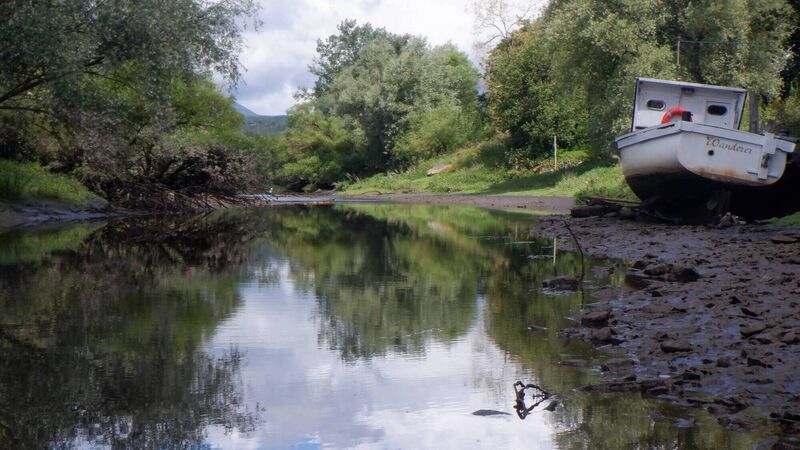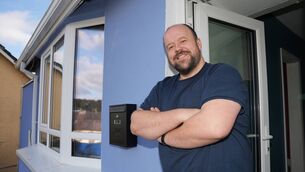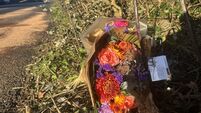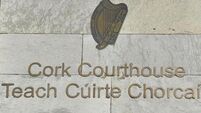Islands of Ireland: Lefanta has lured the Irish for millennia

Lefanta Island on the River Blackwater, Co Waterford. Picture: Dan MacCarthy
The name of this Co Waterford river island suggests a locale from an Edgar Allen Poe mystery or from a Joseph Conrad sea epic.
However, rather than such an exotic origin, the answer is much closer to home. As Manchán Magan demonstrated in his recent book, 32 Words for Field, many are the reasons a field acquires a name and the word ‘field’ is simply too generic to be considered useful. Manchán lists ‘banóg’, ‘inghealtas’, ‘domasach’, ‘tamhnach’, and many others.
The name Lefanta Island, on the River Blackwater (and the name of the neighbouring townland), derives from ‘Liath bhánta’, meaning ‘grasslands’ or ‘grey pastures’. Given the impenetrable woods and undergrowth on the island, ‘fásach’, meaning a field with ‘wild, luxuriant growth’, might have been more appropriate. In the 18th century, the name had transmogrified into the ‘Levantes’ and then ‘Lefantes Island’, before settling on Lefanta.
The sizeable island is about 4km downstream from Cappoquin, near the confluence with the Finisk River. In common with Lefanta Island, which lends or borrows its name from the associated townland, so, too, do the Mountrivers islands, which are comprised of two, long, curved, wooded islands. There are even a few unnamed islands on this part of the river, where herons and egrets hunt among the shallows.
The earliest sites where people lived in Ireland are considered to be more northerly, such as at Mount Sandel, Co Derry, though Lough Boora, in Co Offaly, is also significant. There is little evidence of habitation in the south of the country.
However, the Blackwater River valley does provide several examples of settlement from about 8,000 years ago. Archaeologists have recovered numerous artefacts of this early culture along the river, at Castleblagh and Ballynamona, Co Cork, and Newport and Lefanta, Co Waterford.
The late Peter Woodman, of University College Cork, was the leading expert in the Mesolithic period in Ireland. He wrote of Lefanta: “An open scatter of artefacts [26 in all] found on a low ridge beside the Blackwater River. These came from an area 100m across. A blade assemblage did produce a worked blade reminiscent of those found at Mount Sandel.”
Among the artefacts recovered were blades, scrapers, and miscellaneous other tools, suggesting that Lefanta was a site regularly visited, if not inhabited, with habitation likely. Individuals would have travelled up along the river from where Youghal is today and, finding Lefanta salubrious, settled. Ample fishing of the river would have afforded these people a basis for a settlement, along with what mammals they could kill in the forests.
The river at this point is tidal and at low tide can be crossed via gravel banks. This geographical feature is reflected in the nearby townland of Affane (Áth Mheáin), or Middle Ford.
Whether the elongated Lefanta Island had its current shape back then is guesswork. The likelihood is that its shape changed many times over the centuries and may even have been attached to the bank itself. Further excavations may yet yield more information about our early ancestors.
The greater Lefanta is a fertile area with rich, alluvial soil. A reader, John, from Lismore, wrote recently to say his great grandfather used to import guano from Peru, through Youghal Harbour all the way up the River Blackwater to Lismore, in the late 1800s. Perhaps this fertiliser was also used to enhance the Lefanta fields. It was sold in in 2cwt bags. Written on the bag was: “Buy me and I’ll pay the rent.”
The Blackwater has long been associated with rich fishing grounds and the great estates along the river, which inspired the sobriquet ‘the Rhine of Ireland’, were often at odds with each other over fishing rights.
And not just the great houses. In 1830, monks from Cappoquin were caught in the act of cot fishing by an agent of the duke of Devonshire, from Lismore Castle, using a type of net, a snap. It is not known what fate befell them.
- How to get there: Blackwaterboating.ie; www.familyfun.ie/blackwater-kayaks
- Other: logainm.ie; The Mesolithic of Munster: A Preliminary Assessment: Peter C Woodman, Edinburgh 1985 [symposium]; Fisheries of the Munster Blackwater, Arthur EJ Went; Journal of the Royal Society of Antiquaries of Ireland; with thanks to Cappoquin Library.


CONNECT WITH US TODAY
Be the first to know the latest news and updates









